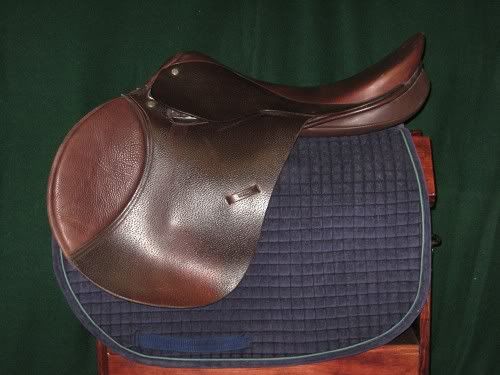Re: english saddles
Mr. Knopp,
Thanks for your reply! I've always liked the lines and in particular(for some reason) the long square skirts of the wagon drivers saddles. I already have a beautiful reproduction of an early to mid 19th century English style saddle made by Mr. Lilie but if I ever purchase another saddle I may well go back to Stuart for a wagon drivers saddle! Thanks again, I always enjoy seeing your informative and knowledgeable replies.
Mr. Knopp,
Thanks for your reply! I've always liked the lines and in particular(for some reason) the long square skirts of the wagon drivers saddles. I already have a beautiful reproduction of an early to mid 19th century English style saddle made by Mr. Lilie but if I ever purchase another saddle I may well go back to Stuart for a wagon drivers saddle! Thanks again, I always enjoy seeing your informative and knowledgeable replies.










 I didn't get it. Needless to say, I did just fine since I always trail-rode in an English saddle, and in fact found one advantage, that I could duck lower under branches without a horn poking me in the stomach. They were genuinely surprised that I could keep up on the hills and rough terrain.
I didn't get it. Needless to say, I did just fine since I always trail-rode in an English saddle, and in fact found one advantage, that I could duck lower under branches without a horn poking me in the stomach. They were genuinely surprised that I could keep up on the hills and rough terrain.
Comment